Home Hi-Tech Games and Consoles ,,,,,
Announced last spring with a massive communication campaign (which we talked about here and here), Lancehead is Razer's new top-of-the-line mouse (which recently made to talk about itself for the new top-of-the-range smartphone) for pointing peripherals, substantially replacing the Mamba, which still remains in the price list.
The basic idea of the Lancehead is to propose a wireless mouse for gamers, capable of making the user experience really concrete even in wireless mode, an operation much more difficult than you think as we will see later.
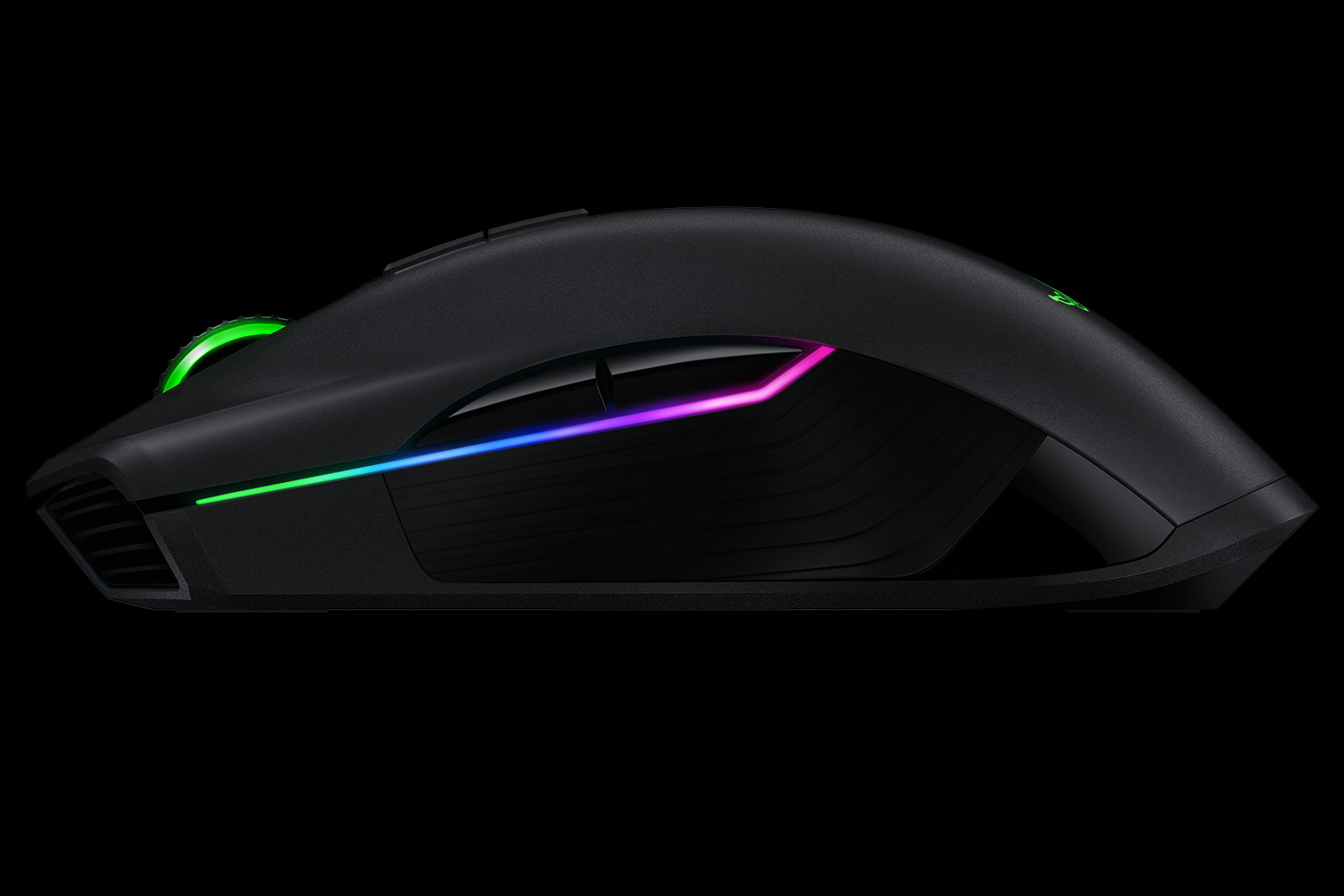
Lancehead, a big responsibility
Before starting to talk about the mouse, however, it is necessary to make a premise: the environment where the Lancehead goes rated is not an office or bedroom, because in that case several other wireless products look good, but an overcrowded environment where twenty or thirty people stand in one space of 15 square meters, each with three or more peripherals (mice, keyboards, headphones, smartphones, smartwatches) and an overcrowding of radio frequencies much higher than any situation.
The point was precisely to realize a device capable of operating in such a hostile environment, while managing to rival its counterpart in terms of performance and safety, because in a video game losing even a single click makes the difference between life and death.
In addition to this, as a top of the range, Lencehead is also a mouse designed to plead the cause of Razer at the top end, in a market that, outside the gamer group, is shrinking and where few names are still able to invest and amaze in design solutions and technologies and in which Razer is increasingly at ease.
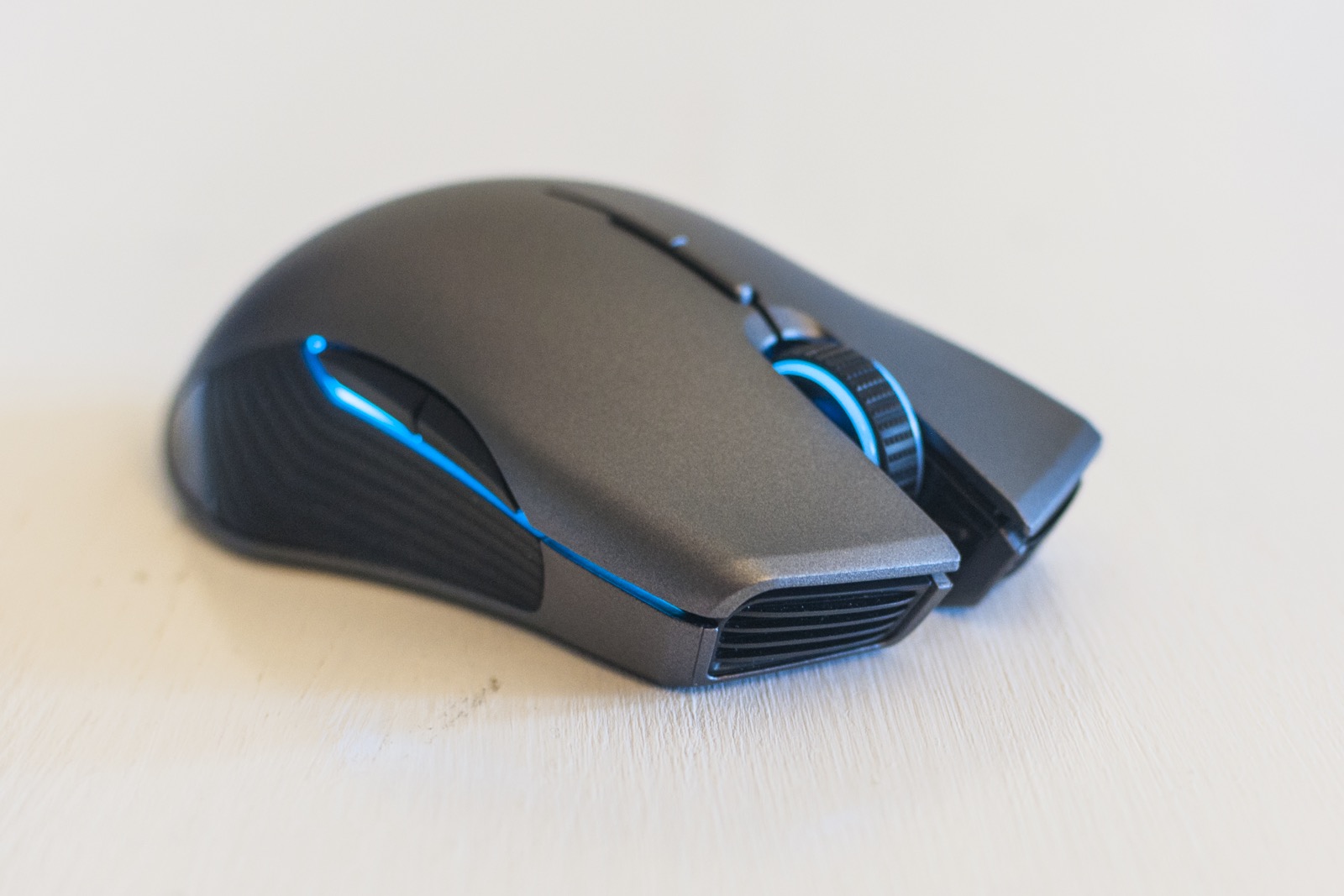
From the Sperlari school
As Gianrico Tedeschi of the Cremonese Sperlari said at the time of the Carosello, also the mous and Razer never “wraps” because the packaging itself is the beginning of the mouse experience.
As with Apple products, Razer would be worth unpacking, too. to admire the precision and attention to every detail, from the box to the internal rubber, from the note announcing “Congratulation, there is no turning back” (which means that once you have tried a Razer product there is no going back) to the positioning of the products, that seem to want to be looked at, as well as used.
The inside of the box features the mouse, the USB-A charging cable (which is also used for wire operation) made of braided fiber with two black rubber cable reels, the wi-fi dongle always USB-A and a housing for the dongle, for the quick switch (without having to use two ports, as we will see).
The shape of the Lencehead is very eye-catching: the upper surface of the mouse is made of anthracite gray s plastic care, with side inserts in soft black viscose rubber.
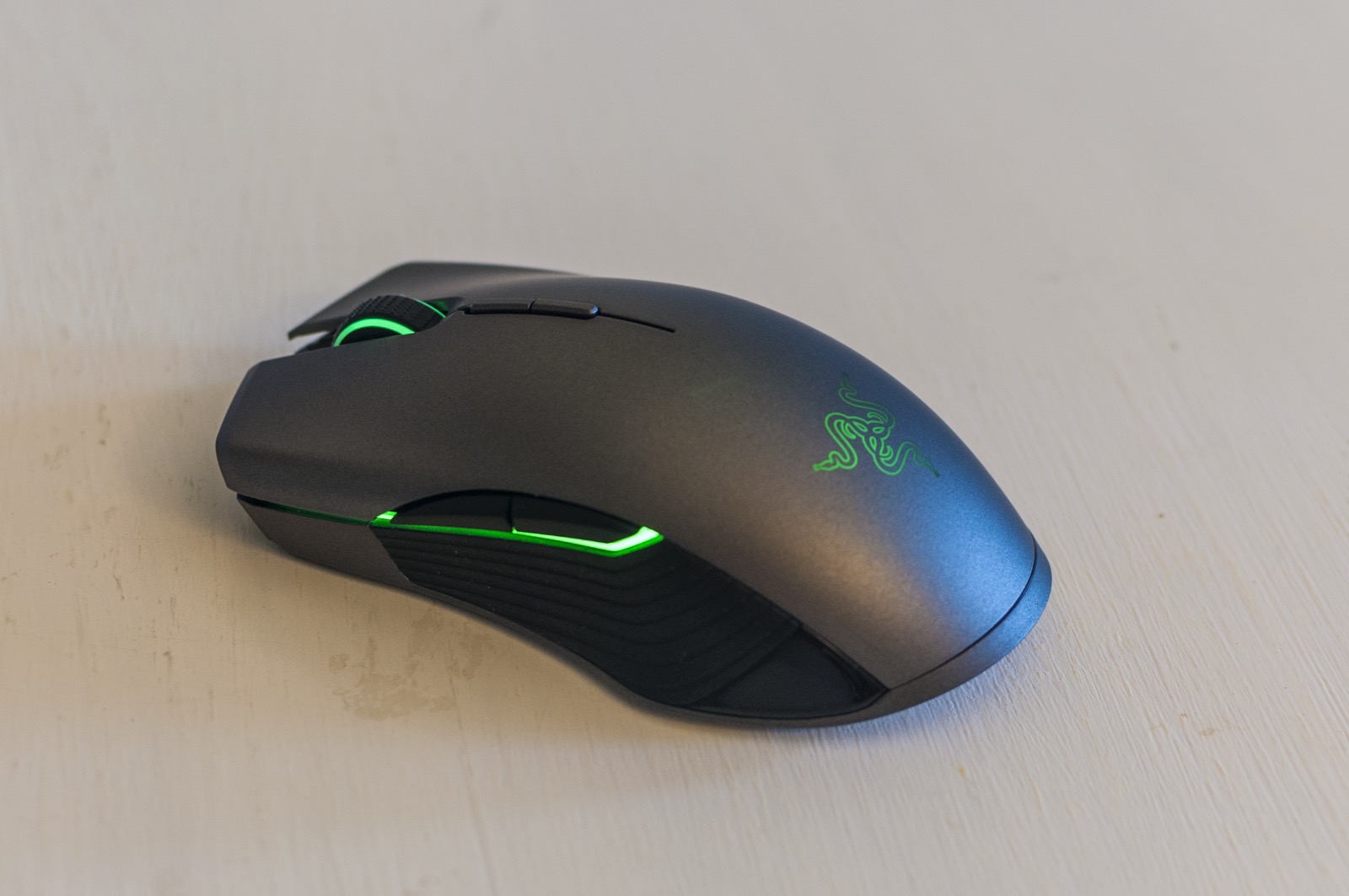
Although for Razer this is nothing new, the 'Chroma lighting with 16 million colors that runs along the inside of the wheel, the logo and the two side profiles is inevitably the most intriguing and eye-catching part, especially since in this mouse the lighting design has been studied in a much more discreet and aggressive.
The ambidextrous profile of the mouse is reminiscent of a sports car, with the front with two large panels finished with fake air vents: for those who write the best part of this mouse, as on the other part of all Razer mice is definitely the safety and comfort of the grip, firm and precise for all hands.
The nine keys (two on the front plus the wheel, two on the top and four on the side) are fully programmable by the Synapse drivers, currently in version 2 but in the meantime we write these lines Razer is testing the brand new v Version 3, to which this mouse in particular is aimed (and which will arrive as a free product to all users): already now, however, the current Synapse drivers are compatible with macOS High Sierra, on which this test was carried out.
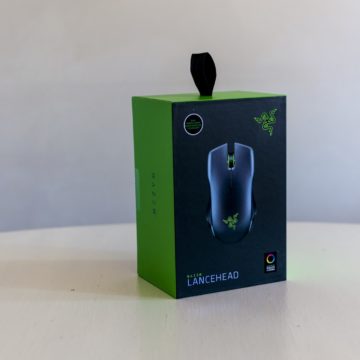
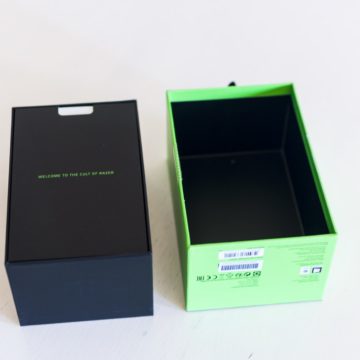
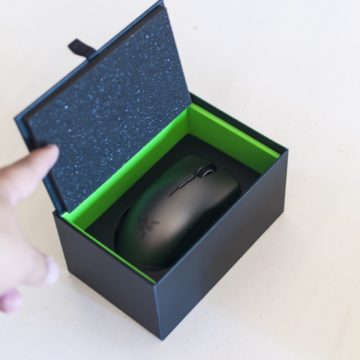

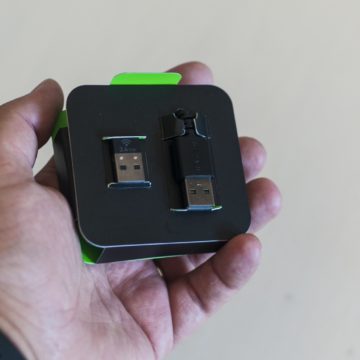
 The cable guide, basically a smart way to save a USB port
The cable guide, basically a smart way to save a USB port 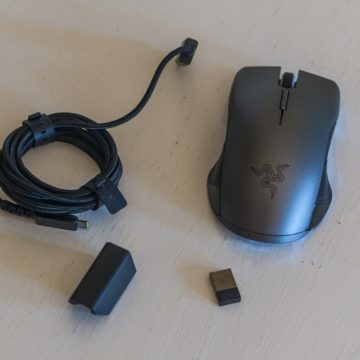 The contents of the package
The contents of the package 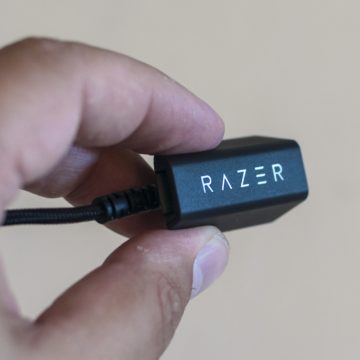 The cable gland is also signed
The cable gland is also signed 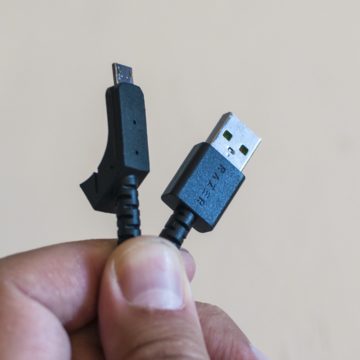
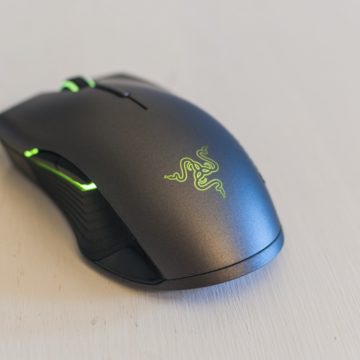
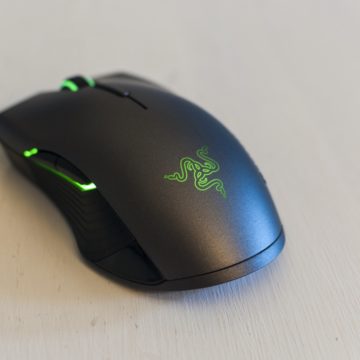
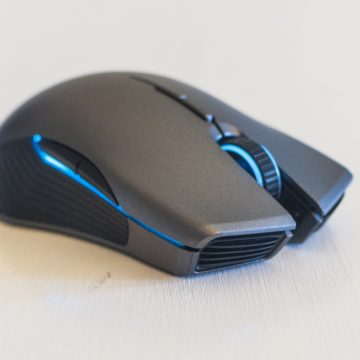
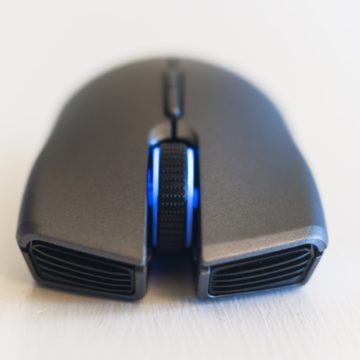
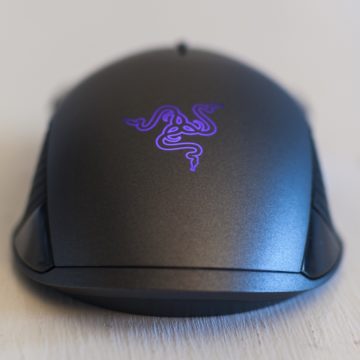

Form and substance
Lencehead is available in two versions, normal and Tournament which, like the Mamba, differ only in the presence of the Wi-Fi module and the pull-out cable in the first, while the second version is limited to the physical connection, but otherwise they should be identical.
When used with a cable, the mouse is the best we have seen so far on the market: the ambidextrous shape is perhaps less enveloping than what it appeared to us, for example, in the case of the DeathAdder Elite but the feeling it's really nice.
The upper surface where the hand rests is smooth but without making it slip, which rests very well in the palm and above all, but this is a characteristic of all Razer mice, leaves the fingers in a high position in the front keys, a situation that offers an unexceptionable grip security.
Similarly, the side rubber allows an interesting grip to the thumb, which awaits the button without anxiety: the two side buttons are easily accessible with a minimum movement of the thumb, while the two on the opposite side practically useless.
Basically, the mouse has nine buttons, but only seven can be used comfortably, while the remaining two they are usable for those who use the mouse with the opposite hand a.
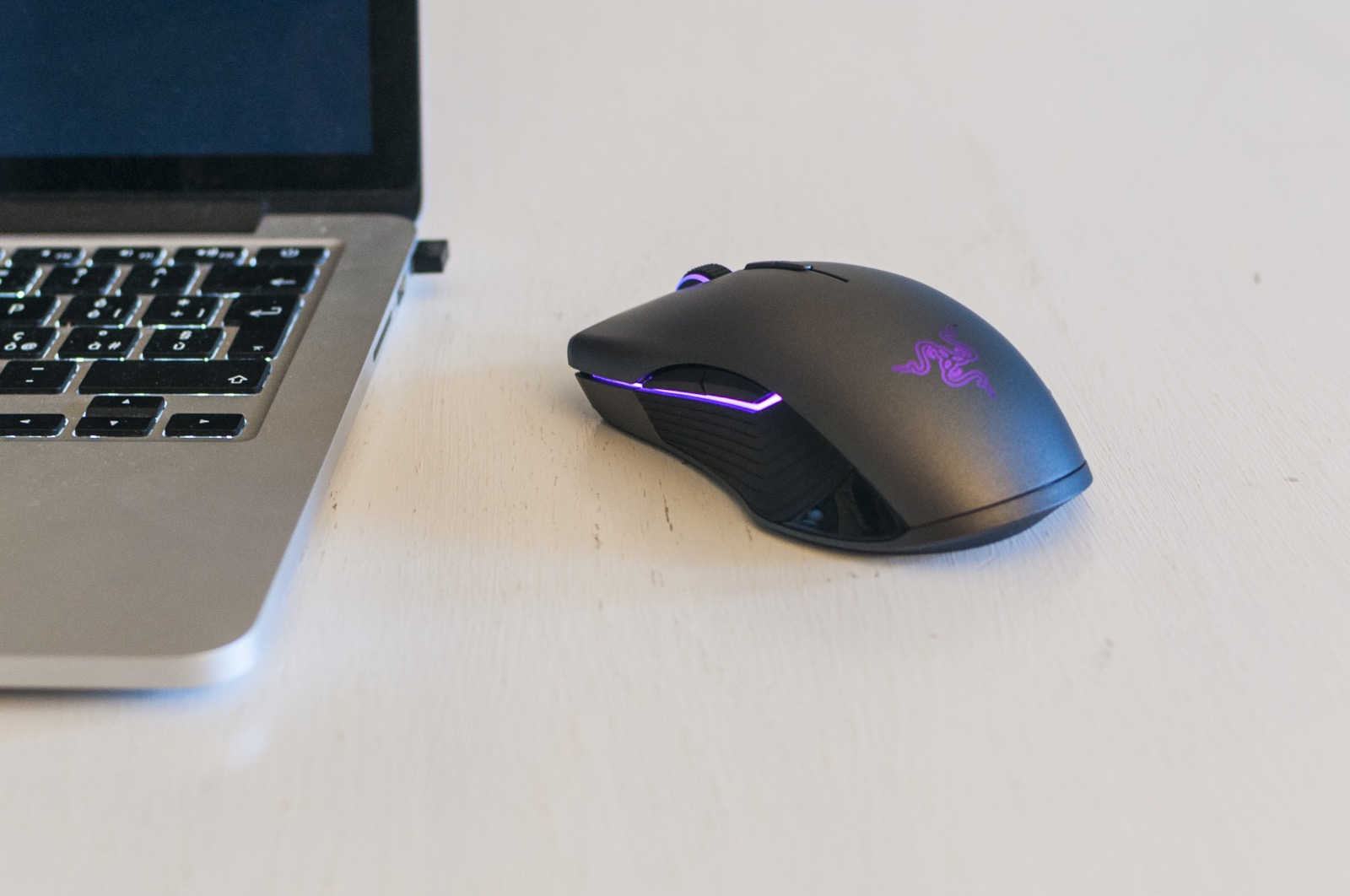
The wheel, with movement only in jerks, it is designed for the precision of the games: here perhaps it was better to opt for an even longer double movement, perhaps motorized with the user's choice, but perhaps we dare too much in such a profiled product.
The precision laser that reaches 210 inches per second / acceleration at 50 G, at a resolution of 16,000 dpi, is the best that can be dared in such a product (the products on the market that reach this resolution there are not many) and it is useful when playing at very high resolution, although the dosage of speed and lightness of movement must be calibrated well from game to game, with some tests on the matter.
Agility and the fluidity are remarkable: although it is not a mouse designed to be used everywhere, we tried it on at least three different desks (wood, lacquered and metal) with the same satisfaction, which is increased by using the mat ino official Razer Gigantus (which we talked about on the occasion of the DeathAdder Elite), in which the mouse acquires a superior naturalness.
Finally, the keys are Razer Mechanical Switches, and should be the same as the DeathAdder Elite, which guarantee a very high precision and a very particular sound in the click, almost metallic and sharp.
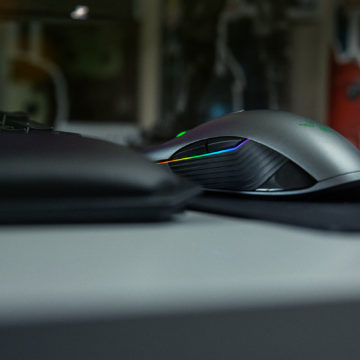
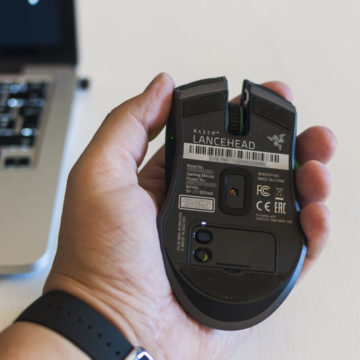
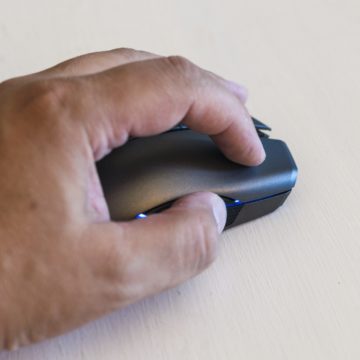

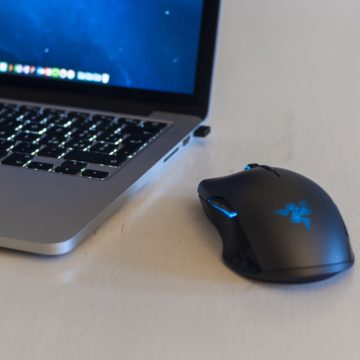
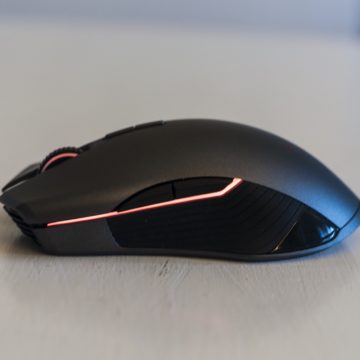
From band to band
A special mention, however, should be emphasized when using the mouse when in wireless mode, for which we detail below.
The wired communication takes place via the wire with Micro USB connector (removable only in the normal version, in the Tournament version it is fixed): it can be connected to a loop that connects a USB-A dongle, which communicates wirelessly to the mouse.
While you can commonly use the USB-A dongle connected to the computer and the wireless mouse, the loop-through solution saves one port (used by the cable, which connects once to the mouse and once to the dongle), which it is very useful because the battery charge lasts one day, at most a day and a half, hence the need for practical and frequent recharging.
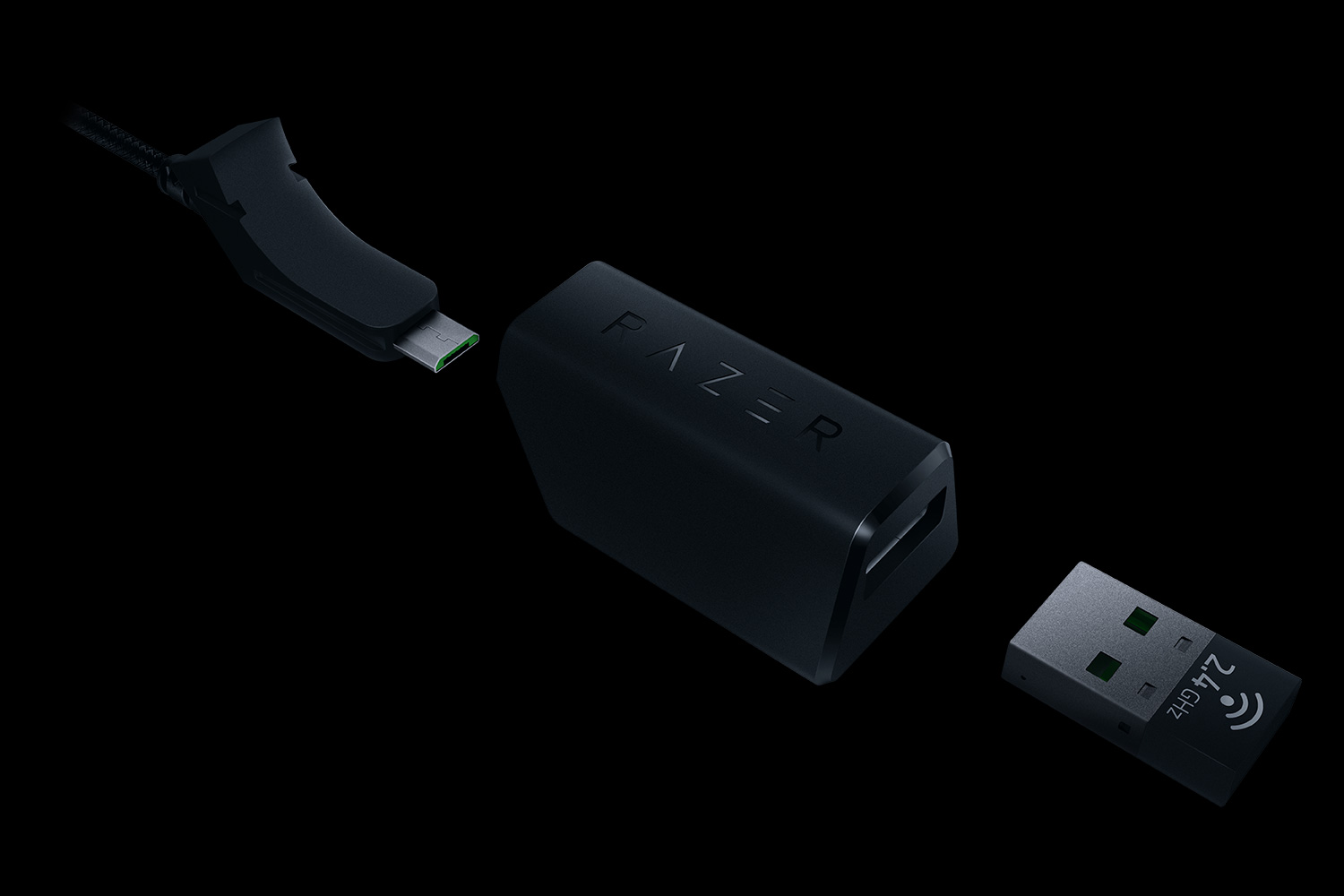
During the test, which started at the end of the summer, we noticed that the transition from wire to wireless wasn't that straightforward, and sometimes we had to reboot the mouse to get full connection.
At the turn of the release of macOS 10.13 the number of Synapse updates was higher than usual and in configuration final, with High Sierra and the new drivers the situation has stabilized: the connection change sometimes lasts a couple of seconds but then everything works correctly. However, we are sure that part of the fault was due to the drivers rather than the mouse, because often these only detected it flush, even if the operation was correct even in wireless, but as detailed in the release notes, this model is designed to work at better with version 3.0 of Synapse, currently in beta.
Notion of merit instead for the Adaptive Frequency Technology (AFT) function, one of the most interesting innovations of this model: without going into too technical details , basically the mouse notices when the wireless frequency it uses to communicate with the dongle is too saturated and switches to a different frequency.
The check takes place every millisecond, in which the mouse scans all the Wi-Fi frequencies to find the freest, most robust and suitable one for use, and then perform the jump, which takes place in a completely transparent way for the user who does not notice anything.
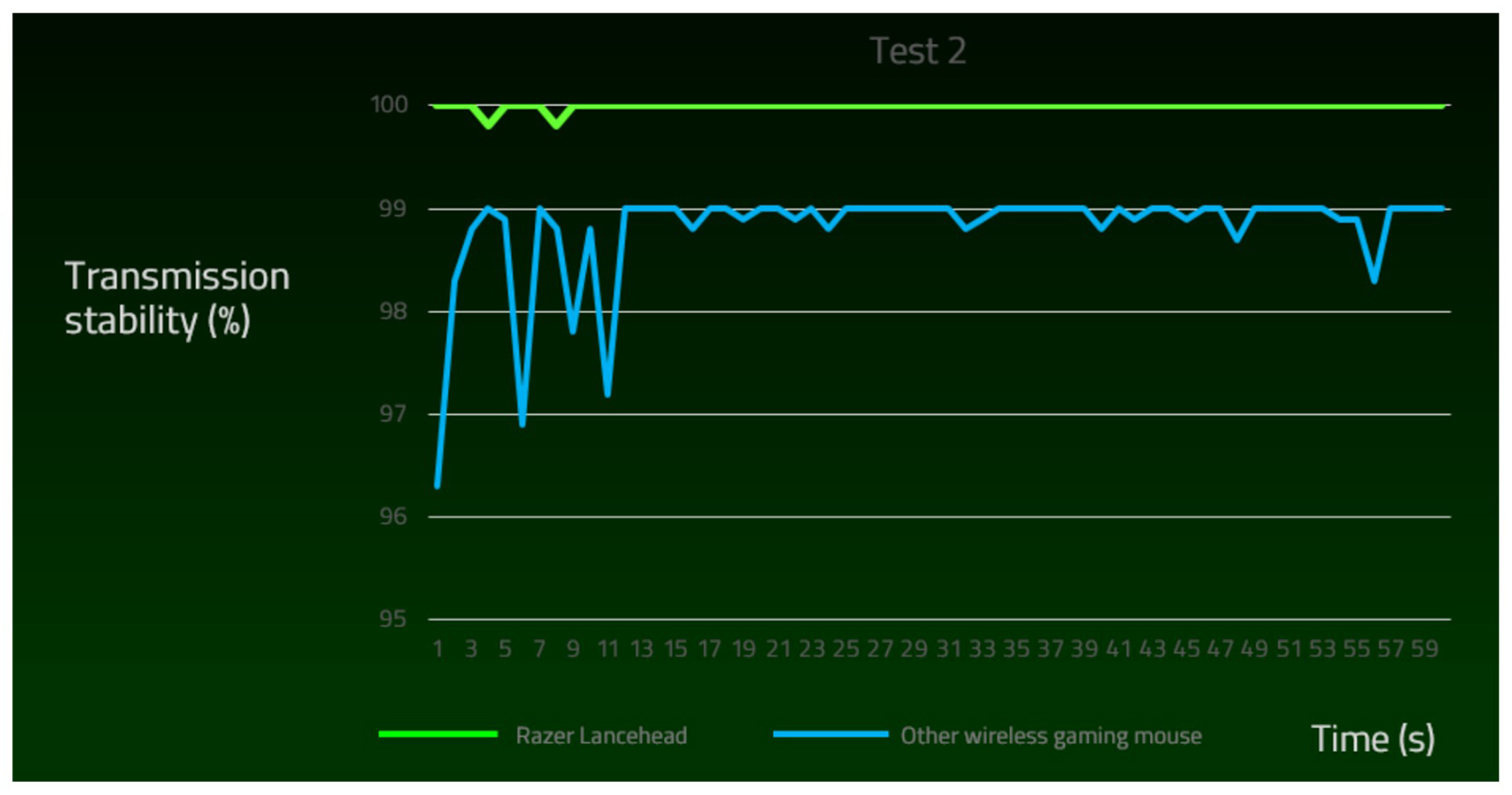 An example of Razer's AFT technology: the green band represents the Razer Lancehead, while the blue band represents a normal mouse: note the difference in stability
An example of Razer's AFT technology: the green band represents the Razer Lancehead, while the blue band represents a normal mouse: note the difference in stability
This fact becomes very interesting when we are in very crowded environments, where routers, headphones, keyboards, mice, smartwatches, cameras, multiroom speakers and other smart accessories each tend to transmit data, occupying a lot of bandwidth: if you have ever tried to use a wireless mouse at the fair, for example, or in a very crowded environment you will have noticed that, even if the connection works, it happens from time to time that there is a “hole” of a few seconds in which the mouse does not respond.
In a video game environment, where one or two seconds can be decisive, such uncertainties are not permissible, which is why often those who play at high levels prefer wired peripherals: Lancehead with AFT technology promises to become the first free mouse in the world from the classics constraints of the Wi-Fi connection.
In our tests in public where in a room there were at least fifteen users with more or less twenty wireless devices including mice, keyboards and headphones, a router, a smart TV, about fifteen cell phones, three iPads, several smartwatches (and who knows what else that didn't appear immediately), the mouse has never given any sign of uncertainty.
For those who like those who write hangs out often at fairs and events, a product that can really be used both flush and in Wi-Fi is very tempting, not only in a video game environment but in high-stress environments in general.
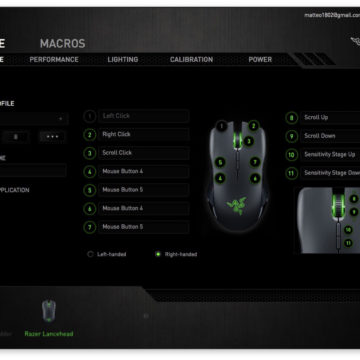
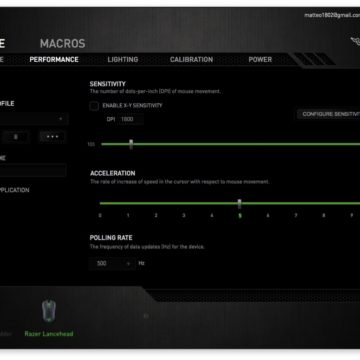
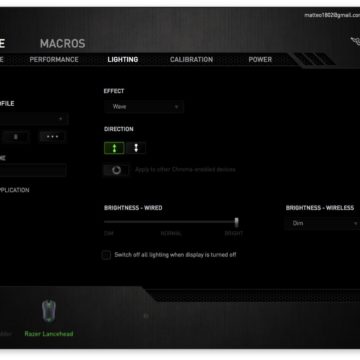
Flagship
Even if nominally the Mamba costs about thirty euros more, we see in this Lancehead the true flagship of the Razer house.
The classy shape, the use of colored LEDs with Chroma technology well positioned ti, the choice of materials for the top and for the side, together with the fluidity when used in the compatible pad, makes it one of the best mice in the world in any situation, both in wastelands chasing demons, as well as on the cold and silent desk of a CEO.
When used wirelessly, AFT technology offers coverage that does not appear clear until, using it quietly at the fair, you do not see colleagues and friends banging their mouse in search of the signal.
We are waiting to see it at work with the new Synapse drivers, which we hope to be able to test by the end of the year in the official version (or early 2018), but it is clear that the situation it can only get better.
Lancehead is already available in the main Italian stores and on the website RazerStore, but you can also find it on Amazon in both normal and Tournament versions (only flush).
Pro :
Against:
Price: € 149.99 (€ 89.99 for the Tournament version, flush only)
,,





